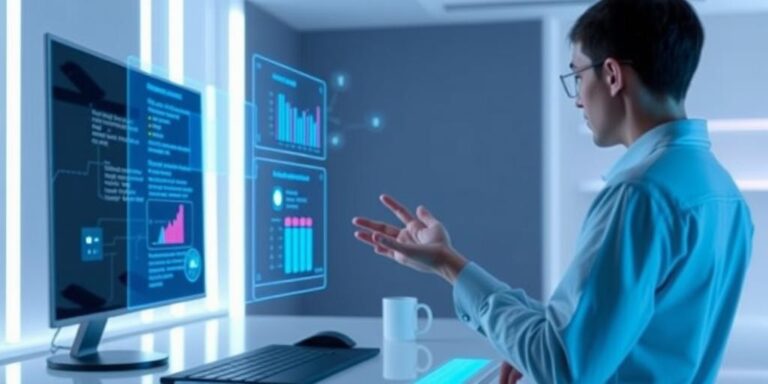Beyond Keyboards and Mice: The Future of Input (2025+)
The way we interact with technology is constantly evolving. For decades, keyboards and mice have reigned supreme, but the future of input is poised for a radical transformation. As we move beyond 2025, expect to see a surge in alternative input methods that promise more intuitive, efficient, and immersive user experiences.
The Limitations of Traditional Input
Before diving into what’s next, it’s important to recognize the constraints of current input devices. Keyboards, while versatile, can be cumbersome and require significant training. Mice offer precision but lack the natural fluidity of human movement. These limitations become even more apparent in emerging fields like virtual reality (VR) and augmented reality (AR), where traditional input methods feel clunky and inadequate.
Emerging Input Technologies
Several innovative technologies are vying to become the next standard in human-computer interaction:
- Voice Control: Voice assistants like Alexa, Siri, and Google Assistant have already demonstrated the power of voice-based interaction. Expect further advancements in natural language processing (NLP) to make voice control more seamless and context-aware.
- Gesture Recognition: Cameras and sensors can now track hand and body movements with incredible accuracy. This opens the door to controlling devices with gestures, offering a more natural and intuitive way to interact with digital environments. Companies like Leap Motion are pioneering this technology.
- Eye Tracking: By monitoring eye movements, devices can understand where a user is focusing their attention. This enables gaze-based interfaces, where you can control a computer simply by looking at different elements on the screen. Eye tracking is particularly promising for accessibility and gaming.
- Brain-Computer Interfaces (BCIs): While still in its early stages, BCI technology holds immense potential. By directly connecting the human brain to a computer, BCIs could allow us to control devices with our thoughts. Companies like Neuralink are actively developing this technology.
- Haptic Feedback: Immersive experiences require more than just visual and auditory stimulation. Haptic technology provides tactile feedback, allowing users to feel virtual objects and textures. This is crucial for VR/AR applications and could also enhance traditional input methods.
Long-Tail Keyword Variations:
- Future of computer input methods
- Alternative input devices for 2025
- Next-generation human-computer interaction
- Voice and gesture control technology trends
- Emerging input technologies for VR/AR
The Impact on Industries
The evolution of input methods will have a profound impact on various industries:
- Gaming: More immersive and intuitive controls will enhance the gaming experience, blurring the line between the virtual and real worlds.
- Design and Engineering: Gesture-based interfaces will allow designers and engineers to manipulate 3D models with greater precision and ease.
- Healthcare: BCIs could revolutionize the treatment of neurological disorders and provide new ways for people with disabilities to interact with the world.
- Manufacturing: AR-powered interfaces could guide workers through complex assembly tasks, improving efficiency and reducing errors.
Challenges and Opportunities
Despite the immense potential, there are challenges to overcome. Developing robust and reliable gesture recognition systems, ensuring user privacy with eye-tracking technology, and addressing the ethical implications of BCIs are all critical considerations.
However, these challenges also present significant opportunities for innovation. Companies that can develop user-friendly, secure, and ethical input solutions will be well-positioned to lead the future of human-computer interaction.
The Road Ahead
The future of input is not about replacing keyboards and mice entirely. Instead, it’s about offering a wider range of options that cater to different needs and preferences. Expect to see a hybrid approach, where traditional input methods are complemented by newer technologies like voice control, gesture recognition, and eye tracking. As these technologies mature, they will transform the way we interact with technology, making it more intuitive, efficient, and immersive than ever before.




